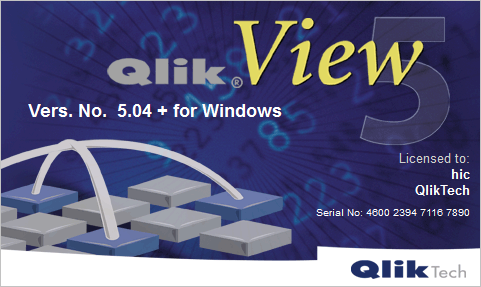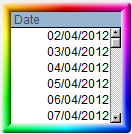Unlock a world of possibilities! Login now and discover the exclusive benefits awaiting you.
- Qlik Community
- :
- Discover
- :
- Blogs
- :
- Product
- :
- Design
- :
- A Historical Odyssey: QlikView 5 and the Rainbow B...
- Subscribe to RSS Feed
- Mark as New
- Mark as Read
- Bookmark
- Subscribe
- Printer Friendly Page
- Report Inappropriate Content
Productwise, QlikView 5 was about consolidation. We did not change very much from QlikView 4. We already had a feature-rich product – now it was about improving the details and making it more stable.

So we improved the functions in the UI – made it look nicer, introduced a layout menu and a layout undo, made it possible to copy and paste objects, introduced the current selections box, an input box, fast type change in charts, windows selection style and fuzzy search. And we made it possible to export data to Excel.
We also improved the data loading capabilities. Now it became possible to load Unicode characters and HTML tables as well as XML files. It also became possible to load from SQL stored procedures. And the script editor was equipped with a debugger.
We developed the server further and made it more stable, but we really didn’t change much in the basic architecture.
None of the above was incredibly exciting or ground-breaking. Instead, QlikView 5 could perhaps be remembered for one less impressive feature: the rainbow border. This was probably one of the less useful features we have introduced. Whether it was beautiful, I leave to you to decide ....
During the lifetime of QlikView 5, Intel introduced a new, promising processor architecture: the Itanium, a 64-bit RISC processor for PCs. This was the future! With such a processor QlikView would no longer be limited by the 3GB restriction on the amount of data it could handle. This opened up a fantastic new opportunities! QlikView would be able to load much larger data amounts than before!
We immediately started to develop an Itanium edition of QlikView. As a consequence, the later releases of QlikView 5 were all compiled into both a 32 and a 64 bit edition. QlikView 5 therefore goes down in history as the first 64-bit version of the product (even though QlikView 6 was the first version where there was an official 64-bit version.)
As we developed QlikView 5 during year 2000, QlikTech got new investors which led to a change of management. When we released QlikView 5 in the spring of 2001, Måns Hultman had been appointed CEO.
Måns had a very clear picture of what the company needed: A refined sales strategy and a bigger sales force. The new sales strategy was simple: Focus. Rather than selling QlikView as a tool that could do anything, we would focus on financial applications on top of ERP systems, especially Movex (which was a common system in Sweden at that time). The target prospects were controllers and CFOs.
And it worked. With Måns’ new strategy and a good, stable QlikView 5, the company started growing faster than ever before. The course was set for becoming a public company.
Further reading on the Qlik history:
You must be a registered user to add a comment. If you've already registered, sign in. Otherwise, register and sign in.